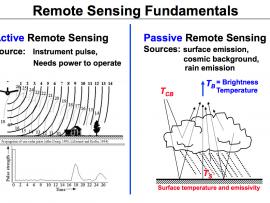Browse Technology Resources
Browse Technology Resources
Primary Topic:
Subtopics:
Type:
Keywords:
Summary:
An informational lithograph / handout which shows images of the GPM Core Observatory and constellation satellites, and explains the goals and methods of the GPM mission.
Primary Topic:
Subtopics:
Type:
Keywords:
Summary:
Interview with Dr. Dalia Kirschbaum, research physical scientist and GPM Applications Scientist at NASA Goddard Space Flight Center.
Primary Topic:
Subtopics:
Type:
Standards:
Keywords:
Summary:
This booklet explains the basics of weather satellites and contains activities to explain questions like "How does a satellite stay up in space without falling back to Earth? "
Primary Topic:
Subtopics:
Type:
Standards:
Summary:
This and other similar tests will verify the deployment function of the GPM Core Observatory solar arrays in ambient condition.
Primary Topic:
Subtopics:
Type:
Standards:
Keywords:
Summary:
In this promotional video NASA scientists discuss why it is so important to study and track Earth's freshwater resources, and explain the purpose of the Global Precipitation Measurement mission.
Primary Topic:
Subtopics:
Type:
Standards:
Keywords:
Summary:
Satellites can orbit Earth's equator or go over Earth's North and South Poles, or anything in between. They can orbit at a low altitude, or thousands of miles out in space. The choice of orbit all depends on the satellite's job.
Primary Topic:
Subtopics:
Type:
Audience:
Keywords:
Summary:
This video takes you on a tour of NASA Goddard Space Flight Center's satellite testing chambers. They are used to test many of NASA's satellites and instruments, including GPM!
Primary Topic:
Subtopics:
Type:
Keywords:
Standards:
Summary:
This website explores the technologies used to study and understand tropical cyclones.
Primary Topic:
Subtopics:
Type:
Keywords:
Summary:
This diagram illustrates the differences between active and passive remote sensing. TRMM and GPM rely on active and passive instruments to measure the properties of precipitation from space.
Primary Topic:
Subtopics:
Type:
Keywords:
Summary:
During the 2010 hurricane season, NASA deployed its piloted DC-8 and WB-57, and unmanned Global Hawk aircraft, arming hurricane researchers with the information needed to predict the growth and intensification of hurricanes.











